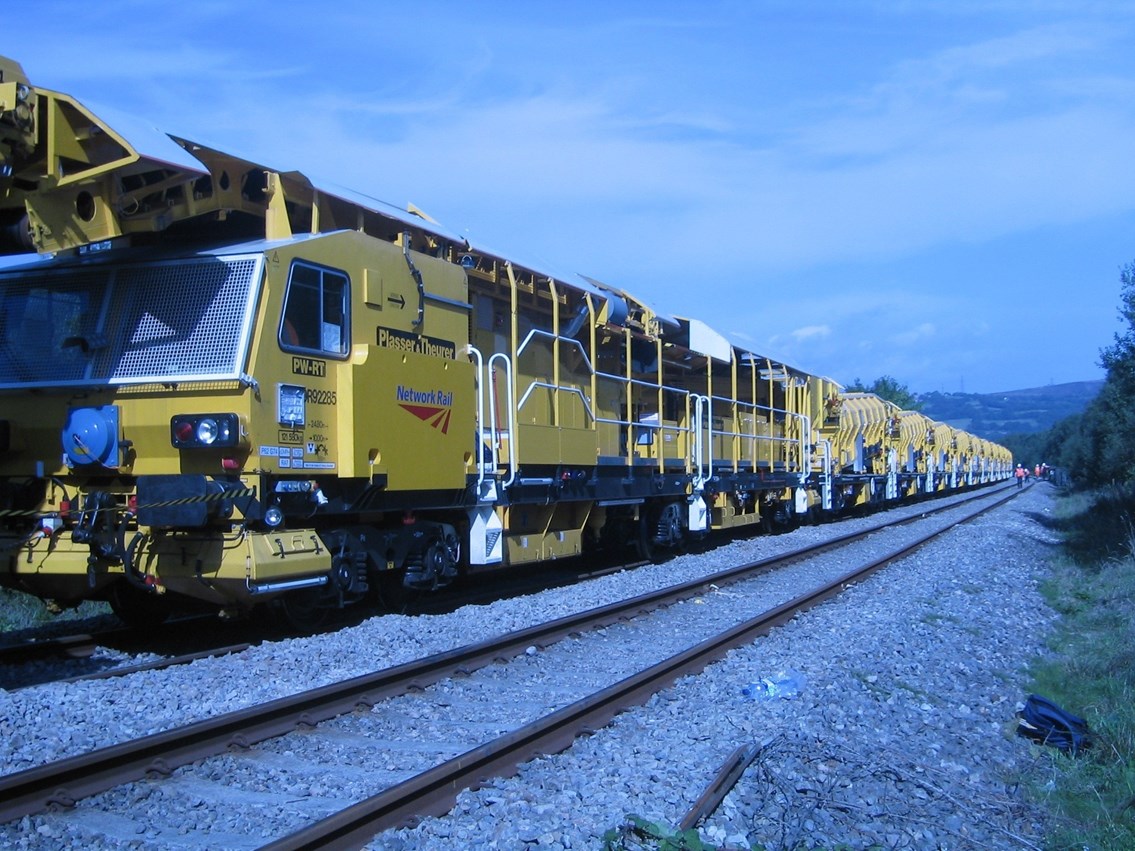Tuesday 12 Feb 2008
NETWORK RAIL'S ROCK SOLID INVESTMENT IN NEW BALLAST CLEANER
- Region & Route:
- National
Network Rail took another significant step in its drive to improve the way it carries out engineering and maintenance works this month by ordering a new ballast cleaning system. Built by Austrian rail engineering firm Plasser and Theurer, the 800 metre, 3,200 tonne High Output Ballast Cleaner works on the tracks' ballast foundation and will significantly reduce the time it takes to renew ballast. It will be the third such system to operate on the network. The huge yellow machine slashes the time it takes to clean and replace track ballast, and is capable of cleaning around 600 hundred yards of track ballast during a typical midweek eight-hour night-shift. Ballast cleaning is essential for the safe running of the railway as it helps drainage and maintains correct track levels and alignment making journeys smoother for passengers. The £41.7m order forms part of a major £101m investment programme to bring more new engineering technologies to the railway in Britain. This will allow Network Rail to be more efficient in maintaining, renewing and enhancing the network. As part of the programme, Network Rail will also soon be ordering another high output track re-laying train to speed up the time it takes to carry out track renewals. Network Rail’s Director, Infrastructure Investment, Simon Kirby, said: “This major investment in new technology will reduce the time it takes to carry out important ballast cleaning work. It forms part of an exciting programme which will bring more innovative engineering equipment and ways of working to our network. “We are always looking for ways to carry out maintenance and engineering work quicker, smarter and more efficiently and keep any disruption to passenger and freight services to a minimum.”
Notes to editors
The ballast cleaning train works by excavating ballast from beneath the track while holding the track in its correct position. The machine passes the excavated material through large vibrating sieves, removing damaged ballast, or ‘fines’, to specialist wagons in the train, before returning the larger pieces of ballast to the track. Finally, the machine then adds new ballast from wagons to make up for the ‘fines’ removed. The system will be used to clean ballast on the West Coast and East Coast main lines as well as in Scotland. The total system comprises of one ballast cleaner, two power wagons, 44 MFS wagons, one compaction machine and one consolidation machine. Network Rail's other High Output Ballast Cleaners operate on the western and eastern routes.Contact information
Passengers / community members
Network Rail national helpline
03457 11 41 41
Latest travel advice
Please visit National Rail Enquiries
Journalists
Network Rail press office - National
020 3356 8700
mediarelations@networkrail.co.uk
About Network Rail
We own, operate and develop Britain's railway infrastructure; that's 20,000 miles of track, 30,000 bridges, tunnels and viaducts and the thousands of signals, level crossings and stations. We run 20 of the UK's largest stations while all the others, over 2,500, are run by the country's train operating companies.
Usually, there are almost five million journeys made in the UK and over 600 freight trains run on the network. People depend on Britain's railway for their daily commute, to visit friends and loved ones and to get them home safe every day. Our role is to deliver a safe and reliable railway, so we carefully manage and deliver thousands of projects every year that form part of the multi-billion pound Railway Upgrade Plan, to grow and expand the nation's railway network to respond to the tremendous growth and demand the railway has experienced - a doubling of passenger journeys over the past 20 years.
Follow us on Twitter: @networkrail
Visit our online newsroom: www.networkrailmediacentre.co.uk

